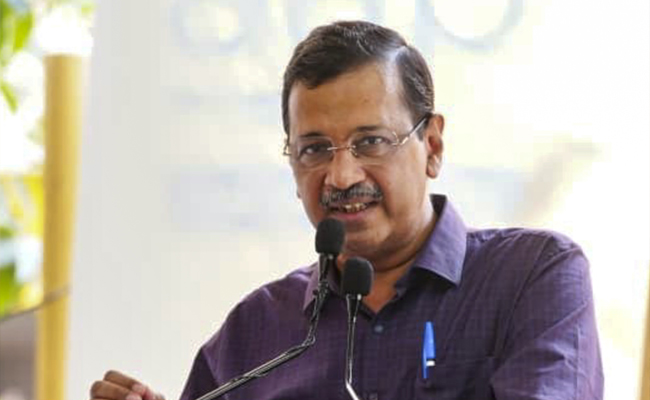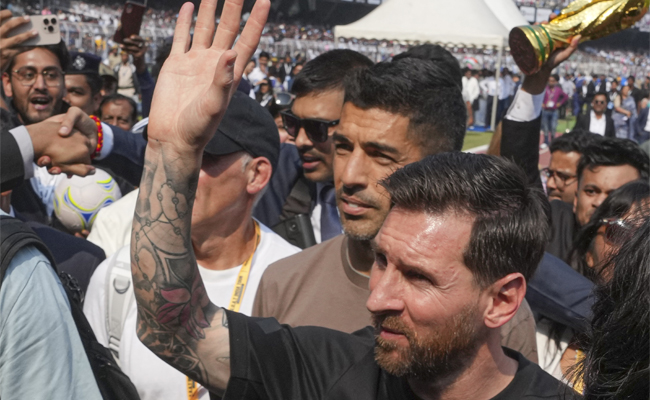New Delhi, Nov 4 : The Signature bridge over the Yamuna inaugurated at an eventful function Sunday is double the height of Qutub Minar and has been delayed over 14 years.
The new landmark connect the Wazirabad across the river Yamuna to the inner city and will reduce the travel time between north and northeast Delhi.
Inaugurating the bridge with a 154 metre pylon, Delhi Chief Minister Arvind Kejriwal and his deputy Manish Sisodia said that it will be a centre of attraction among local and international tourists who come to Delhi to visit historical monuments and buildings like India Gate and Qutub Minar.
The bridge will be a big relief to huge number of commuters who were earlier stuck up in long traffic jams over a narrow bridge in Wazirabad area.
The Western and Eastern approaches to bridge will connect the nearby areas like Timarpur, Nehru Vihar, Wazirabad, Aruna Nagar, Mukherjee Nagar on Ring Road to Bhajanpura on Mangal Pandey Marg.
The bridge will reduce the commuting time between northeast areas and the inner city from 45 minutes to just 10 minutes, saving the pollution and fuel, a government statement said.
The boomerang shaped pylon consists of two inclined columns, which are rigidly connected to the driv ing lanes and bend mid-way. The upper portion of the pylon an chors the backstay cables as well as the main-span cables, arranged in a harp like manner, the statement said.
The pylon from a distance looks like hands folded in a greeting posture. Its top is created by a 22-metre high steel-glass structure, which will provide a panoramic view of Delhi.
Visitors will be taken in four elevators with a total capacity of carrying 50 people to a 154-metre-high glass box on the top of the bridge to provide them a bird's-eye view of the city, the statement said.
Announced in 2004, the bridge missed several deadlines since 2011.
The proposal for the bridge, mooted in 2004, received approval of the Delhi Cabinet in 2007. It was initially expected to be completed at a modified estimate of Rs 1,131 crore for the Commonwealth Games, held in Delhi in October 2010.
In 2015, the cost of the project rose to Rs 1,594 crore.
Sisodia claimed that the actual work on the bridge started when AAP came to power in 2015 although the idea of it was conceived way back in 1997 by the then Chief Minister Sahib Singh Verma.
He also said that an additional cost of around Rs 350 was raised by engineers as there was a huge underground rock and it needed to be stabilised for safety.
He also alleged that the Centre created "obstacles" so that the bridge was not completed in Arvind Kejriwal regime.
Let the Truth be known. If you read VB and like VB, please be a VB Supporter and Help us deliver the Truth to one and all.
Panaji (PTI): As part of a crackdown against tourist establishments violating laws and safety norms in the aftermath of the Arpora fire tragedy, Goa authorities on Saturday sealed a renowned club at Vagator and revoked the fire department NOC of another club.
Cafe CO2 Goa, located on a cliff overlooking the Arabian Sea at Vagator beach in North Goa, was sealed. The move came two days after Goya Club, also in Vagator, was shut down for alleged violations of rules.
Elsewhere, campaigning for local body polls, AAP leader Arvind Kejriwal said the fire incident at Birch by Romeo Lane nightclub at Arpora, which claimed 25 lives on December 6, happened because the BJP government in the state was corrupt.
An inspection of Cafe CO2 Goa by a state government-appointed team revealed that the establishment, with a seating capacity of 250, did not possess a no-objection certificate (NOC) of the Fire and Emergency Services Department. The club, which sits atop Ozrant Cliff, also did not have structural stability, the team found.
The Fire and Emergency Services on Saturday also revoked the NOC issued to Diaz Pool Club and Bar at Anjuna as the fire extinguishers installed in the establishment were found to be inadequate, said divisional fire officer Shripad Gawas.
A notice was issued to Nitin Wadhwa, the partner of the club, he said in the order.
Campaigning at Chimbel village near Panaji in support of his party's Zilla Panchayat election candidate, Aam Aadmi Party leader Kejriwal said the nightclub fire at Arpora happened because of the "corruption of the Pramod Sawant-led state government."
"Why this fire incident happened? I read in the newspapers that the nightclub had no occupancy certificate, no building licence, no excise licence, no construction licence or trade licence. The entire club was illegal but still it was going on," he said.
"How could it go on? Couldn't Pramod Sawant or anyone else see it? I was told that hafta (bribe) was being paid," the former Delhi chief minister said.
A person can not work without bribing officials in the coastal state, Kejriwal said, alleging that officers, MLAs and even ministers are accepting bribes.





